-
 Bitcoin
Bitcoin $106,782.3966
-0.72% -
 Ethereum
Ethereum $2,406.7764
-1.16% -
 Tether USDt
Tether USDt $1.0005
0.02% -
 XRP
XRP $2.0918
-1.53% -
 BNB
BNB $644.5785
-0.17% -
 Solana
Solana $141.0925
-0.69% -
 USDC
USDC $1.0000
0.02% -
 TRON
TRON $0.2721
0.18% -
 Dogecoin
Dogecoin $0.1585
-1.26% -
 Cardano
Cardano $0.5497
-1.14% -
 Hyperliquid
Hyperliquid $35.8493
-1.58% -
 Bitcoin Cash
Bitcoin Cash $502.3089
2.20% -
 Sui
Sui $2.7092
3.87% -
 Chainlink
Chainlink $12.8551
-1.85% -
 UNUS SED LEO
UNUS SED LEO $9.0548
0.53% -
 Stellar
Stellar $0.2344
-0.85% -
 Avalanche
Avalanche $17.2676
-0.23% -
 Toncoin
Toncoin $2.8282
0.56% -
 Shiba Inu
Shiba Inu $0.0...01113
-1.14% -
 Litecoin
Litecoin $83.9593
-0.93% -
 Hedera
Hedera $0.1447
0.82% -
 Monero
Monero $306.9022
-2.07% -
 Bitget Token
Bitget Token $4.6358
3.42% -
 Dai
Dai $0.9999
0.01% -
 Ethena USDe
Ethena USDe $1.0001
0.02% -
 Polkadot
Polkadot $3.3211
0.06% -
 Uniswap
Uniswap $6.8775
0.75% -
 Pi
Pi $0.5664
-0.27% -
 Aave
Aave $256.0055
1.28% -
 Pepe
Pepe $0.0...09013
-3.24%
What does it mean when the volume ratio suddenly increases to more than 3 times?
A sudden spike in cryptocurrency trading volume—three times the average—can signal major news, market manipulation, or exchange listings, often indicating potential price movement.
Jun 20, 2025 at 12:42 pm
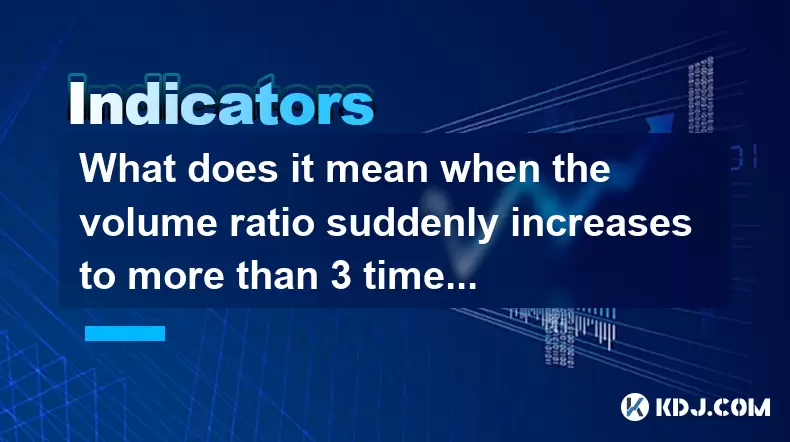
Understanding the Volume Ratio in Cryptocurrency Trading
In cryptocurrency trading, volume ratio refers to the comparison between the current trading volume and the average trading volume over a specific period, typically 20 or 30 days. This metric helps traders gauge whether there is unusual activity occurring in a particular cryptocurrency. When this ratio suddenly increases to more than 3 times, it indicates that the trading volume has spiked significantly compared to its usual levels.
This sudden surge can be observed across various platforms such as Binance, Coinbase, or Kraken, where real-time data on trading volumes is accessible. Traders often use tools like TradingView or CoinGecko to monitor these changes. The key idea is that such an increase may signal important market movements, including potential price shifts or major news affecting the asset.
Possible Causes Behind a Sudden Volume Ratio Spike
A volume ratio jump to over 3 times can be attributed to several factors. One of the most common reasons is the release of major news or announcements related to the cryptocurrency. For example, if a large institution announces support for a specific coin, or if a regulatory change occurs in a major market like the United States or Japan, this could lead to a sudden influx of traders entering or exiting positions.
Another reason could be market manipulation by large holders, commonly referred to as "whales." These individuals or entities may execute large trades to create artificial interest or panic in the market. This kind of behavior is more noticeable in smaller-cap cryptocurrencies, where a single whale's action can significantly influence the trading volume.
Additionally, technical factors such as exchange listing or delisting can also trigger such spikes. If a new exchange lists a previously obscure token, it might attract speculative investors, thereby increasing the volume dramatically within a short time frame.
How to Interpret a High Volume Ratio in Relation to Price Action
Interpreting a high volume ratio requires careful analysis of how it correlates with price movement. If the volume surges alongside a sharp price increase, it may indicate strong buying pressure and genuine interest from the market. This could suggest that the upward trend is supported by real demand, making it potentially sustainable in the short term.
Conversely, if the price drops while volume spikes, it could mean heavy selling pressure. This scenario often signals panic selling or profit-taking by large investors. In such cases, even though the volume is high, the sentiment may be bearish.
There are also instances where volume rises but the price remains flat. This situation usually points to a tug-of-war between buyers and sellers, indicating a possible breakout once one side gains control. Traders often watch for breakout patterns or candlestick formations during such phases to anticipate the next move.
Technical Indicators That Complement Volume Analysis
To better understand what a 3x+ volume ratio spike means, traders often combine volume data with other technical indicators. The Relative Strength Index (RSI) is one such tool that helps determine whether an asset is overbought or oversold. If RSI is near 70 or above and volume suddenly increases, it may suggest a reversal is imminent.
The Moving Average Convergence Divergence (MACD) indicator can also provide insights into momentum shifts. A sudden spike in volume combined with a bullish or bearish MACD crossover can confirm trend strength or weakness.
Moreover, On-Balance Volume (OBV) is a cumulative indicator that adds volume on up days and subtracts it on down days. A rising OBV line confirms bullish momentum, while a falling OBV suggests distribution is taking place despite stable prices.
How Retail Traders Should React to a Volume Ratio Surge
For retail traders, encountering a volume ratio exceeding 3 times its average can be both exciting and risky. Entering a trade solely based on volume without confirming price action or fundamentals can lead to losses, especially if the surge is due to manipulation.
One approach is to wait for confirmation through candlestick patterns or breakouts before placing a trade. For instance, if a cryptocurrency breaks out of a consolidation zone on high volume, it could be a valid entry point.
Traders should also set stop-loss orders to manage risk effectively. Given that volume spikes can cause rapid price swings, having predefined exit points is crucial.
Monitoring social media channels, crypto forums, and official project announcements can help determine whether the volume spike is due to organic interest or coordinated pump-and-dump schemes. Platforms like Twitter, Reddit, and Telegram are often early sources of information about sudden market moves.
Common Mistakes to Avoid When Analyzing Volume Surges
Many traders make the mistake of assuming that a higher volume always equals a stronger trend. However, volume alone cannot confirm direction. It only shows participation. Without proper context, such as price behavior or macroeconomic events, relying solely on volume can mislead traders.
Another common error is ignoring exchange-specific anomalies. Some exchanges report inflated or inaccurate volume data, especially those with low liquidity or questionable credibility. Cross-referencing volume across multiple exchanges can help filter out misleading information.
Lastly, traders sometimes overlook the importance of timeframe selection when analyzing volume. A sudden spike on a 1-hour chart may not carry the same significance as one on a daily chart. Therefore, aligning volume observations with the trader’s strategy and timeframe is essential.
Frequently Asked Questions
What tools can I use to track real-time volume ratios?
You can use platforms like TradingView, CoinMarketCap, or CoinGecko to track real-time volume ratios. These platforms offer customizable dashboards where you can compare current volume against historical averages and view charts that highlight sudden surges.
Is a high volume ratio always a good sign for a cryptocurrency?
Not necessarily. While a high volume ratio indicates increased interest, it doesn’t guarantee positive outcomes. The volume could be driven by panic selling, manipulative tactics, or short-term hype rather than long-term value appreciation.
Can volume ratio spikes occur on decentralized exchanges?
Yes, volume ratio spikes can occur on decentralized exchanges (DEXs) like Uniswap or PancakeSwap, especially during liquidity pool incentives, yield farming events, or token launches. However, volume data on DEXs can be harder to interpret due to automated market makers and transaction batching.
How do I differentiate between organic volume growth and fake volume?
To distinguish between real and fake volume, check for matching price action, order book depth, and on-chain activity. Fake volume often lacks corresponding price movement and appears inconsistent across different exchanges. Tools like CryptoSlam or Dune Analytics can help analyze on-chain transactions to verify legitimacy.
Disclaimer:info@kdj.com
The information provided is not trading advice. kdj.com does not assume any responsibility for any investments made based on the information provided in this article. Cryptocurrencies are highly volatile and it is highly recommended that you invest with caution after thorough research!
If you believe that the content used on this website infringes your copyright, please contact us immediately (info@kdj.com) and we will delete it promptly.
- Sonic, Magic Gathering, and July 2025: What's Trending?
- 2025-06-28 02:30:12
- Bitcoin Whale Inflows Nosedive: Are Investors Eyeing a New All-Time High?
- 2025-06-28 02:30:12
- Smart Investors Eye Audited Token RUVI for Rally Prediction
- 2025-06-28 02:35:12
- Neo Pepe, XRP & Cardano: A Memecoin Summer Showdown?
- 2025-06-28 02:55:12
- Qubetics, Cosmos, Cardano: Decoding Today's Crypto Buzz
- 2025-06-28 02:55:12
- Snap Inc.'s AR Momentum: Stock Surge Fueled by Teen Engagement
- 2025-06-28 02:57:07
Related knowledge
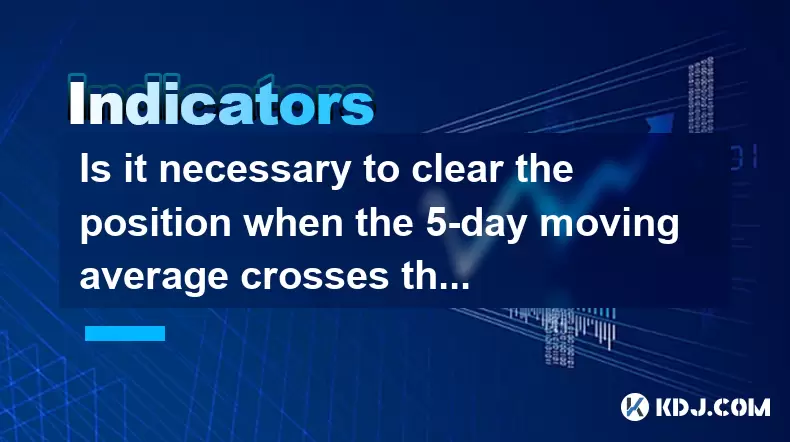
Is it necessary to clear the position when the 5-day moving average crosses the 10-day moving average?
Jun 27,2025 at 07:21pm
Understanding the 5-Day and 10-Day Moving AveragesIn the realm of technical analysis within the cryptocurrency market, moving averages play a crucial role in identifying trends and potential reversal points. The 5-day moving average (MA) and 10-day moving average are two of the most commonly used short-term indicators by traders. These tools smooth out ...
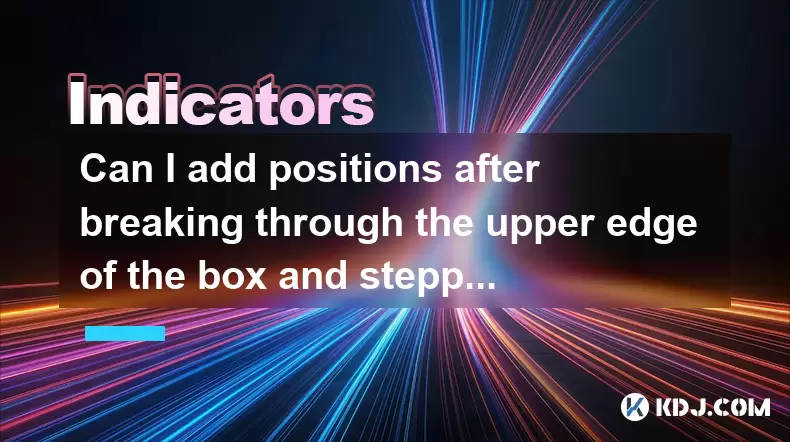
Can I add positions after breaking through the upper edge of the box and stepping back without breaking?
Jun 27,2025 at 09:56pm
Understanding the Box Breakout StrategyIn cryptocurrency trading, box breakout strategies are commonly used by technical analysts to identify potential price movements. A box, or a trading range, refers to a period where the price of an asset moves within two horizontal levels — the support (lower boundary) and resistance (upper boundary). When the pric...
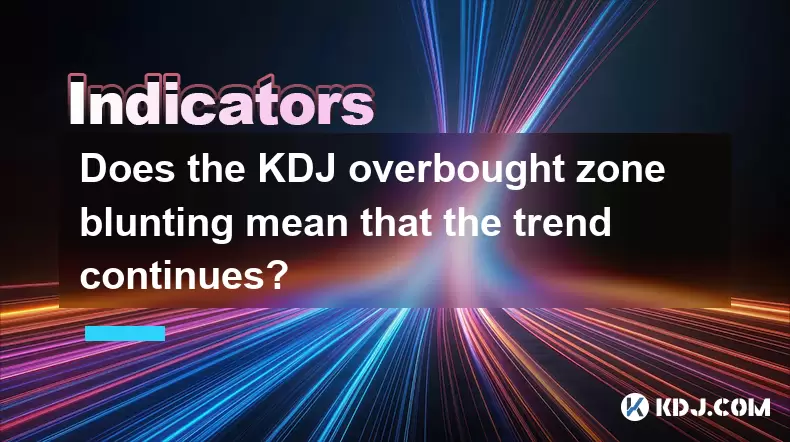
Does the KDJ overbought zone blunting mean that the trend continues?
Jun 27,2025 at 03:35pm
Understanding the KDJ Indicator in Cryptocurrency TradingThe KDJ indicator, also known as the stochastic oscillator, is a popular technical analysis tool used by traders to identify overbought or oversold conditions in asset prices. In the cryptocurrency market, where volatility is high and trends can change rapidly, understanding how to interpret the K...
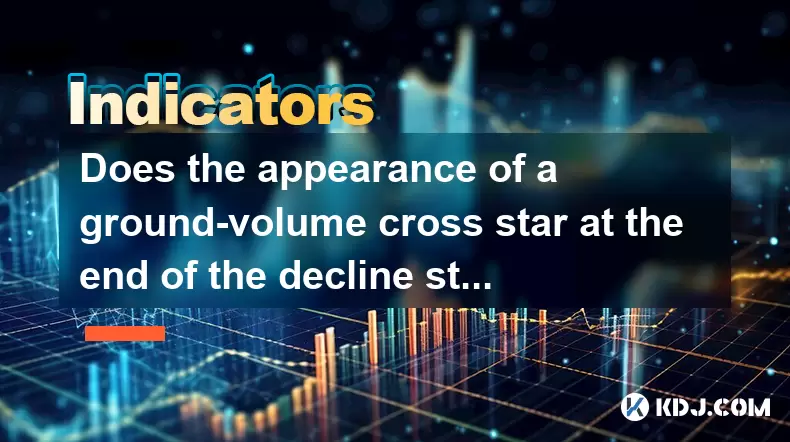
Does the appearance of a ground-volume cross star at the end of the decline stop the decline?
Jun 27,2025 at 10:35pm
Understanding the Ground-Volume Cross Star PatternIn technical analysis, candlestick patterns play a crucial role in identifying potential market reversals. One such pattern is the ground-volume cross star. This pattern typically appears at the bottom of a downtrend and is characterized by a small-bodied candle with long upper and lower shadows, accompa...
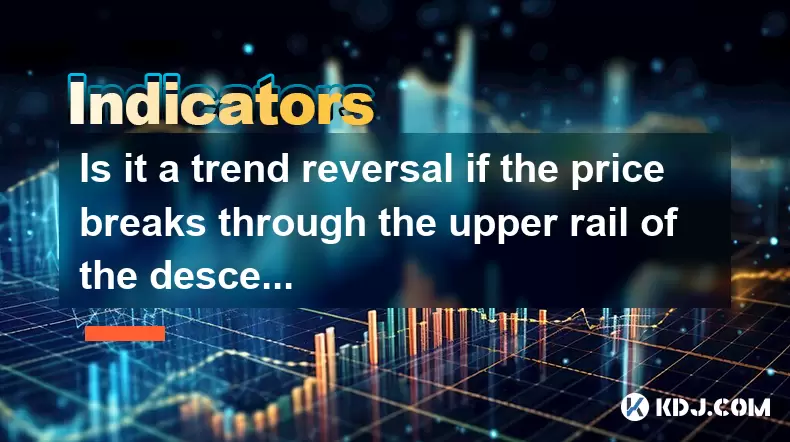
Is it a trend reversal if the price breaks through the upper rail of the descending channel and then steps back without breaking?
Jun 27,2025 at 05:35pm
Understanding the Descending Channel PatternA descending channel is a technical analysis pattern formed by two parallel downward-sloping trendlines, one acting as resistance and the other as support. This pattern typically indicates a continuation of a downtrend, where price action oscillates between these two boundaries. Traders often look for breakout...
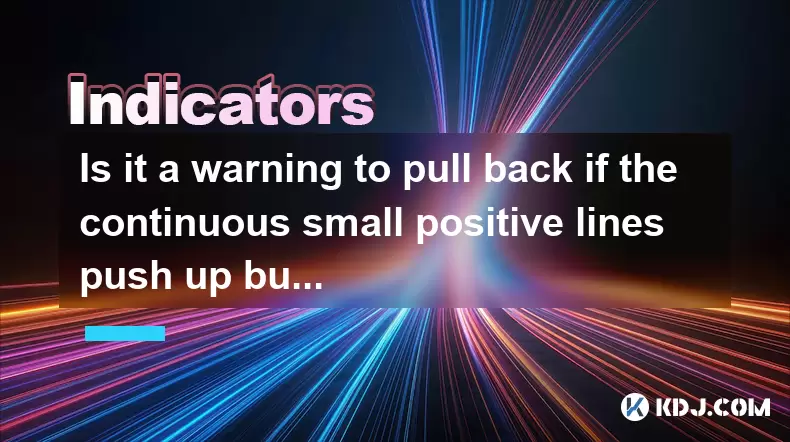
Is it a warning to pull back if the continuous small positive lines push up but the volume is insufficient?
Jun 27,2025 at 05:28pm
Understanding the Pattern: Continuous Small Positive LinesIn technical analysis, continuous small positive lines refer to a series of candlesticks where each candle closes slightly higher than its open. These candles usually have short wicks and indicate a gradual upward movement in price. Traders often interpret this pattern as a sign of steady buying ...

Is it necessary to clear the position when the 5-day moving average crosses the 10-day moving average?
Jun 27,2025 at 07:21pm
Understanding the 5-Day and 10-Day Moving AveragesIn the realm of technical analysis within the cryptocurrency market, moving averages play a crucial role in identifying trends and potential reversal points. The 5-day moving average (MA) and 10-day moving average are two of the most commonly used short-term indicators by traders. These tools smooth out ...

Can I add positions after breaking through the upper edge of the box and stepping back without breaking?
Jun 27,2025 at 09:56pm
Understanding the Box Breakout StrategyIn cryptocurrency trading, box breakout strategies are commonly used by technical analysts to identify potential price movements. A box, or a trading range, refers to a period where the price of an asset moves within two horizontal levels — the support (lower boundary) and resistance (upper boundary). When the pric...

Does the KDJ overbought zone blunting mean that the trend continues?
Jun 27,2025 at 03:35pm
Understanding the KDJ Indicator in Cryptocurrency TradingThe KDJ indicator, also known as the stochastic oscillator, is a popular technical analysis tool used by traders to identify overbought or oversold conditions in asset prices. In the cryptocurrency market, where volatility is high and trends can change rapidly, understanding how to interpret the K...

Does the appearance of a ground-volume cross star at the end of the decline stop the decline?
Jun 27,2025 at 10:35pm
Understanding the Ground-Volume Cross Star PatternIn technical analysis, candlestick patterns play a crucial role in identifying potential market reversals. One such pattern is the ground-volume cross star. This pattern typically appears at the bottom of a downtrend and is characterized by a small-bodied candle with long upper and lower shadows, accompa...

Is it a trend reversal if the price breaks through the upper rail of the descending channel and then steps back without breaking?
Jun 27,2025 at 05:35pm
Understanding the Descending Channel PatternA descending channel is a technical analysis pattern formed by two parallel downward-sloping trendlines, one acting as resistance and the other as support. This pattern typically indicates a continuation of a downtrend, where price action oscillates between these two boundaries. Traders often look for breakout...

Is it a warning to pull back if the continuous small positive lines push up but the volume is insufficient?
Jun 27,2025 at 05:28pm
Understanding the Pattern: Continuous Small Positive LinesIn technical analysis, continuous small positive lines refer to a series of candlesticks where each candle closes slightly higher than its open. These candles usually have short wicks and indicate a gradual upward movement in price. Traders often interpret this pattern as a sign of steady buying ...
See all articles























































































